Cambridge CXN vs Chord Mojo/Poly - which music streamer is best?
A full-size streamer versus a portable DAC/headphone amp with bolt-on module is a fairer fight than it might at first seem...

Letting the Cambridge CXN and Chord Mojo DAC/Poly streaming module combo go head-to-head might initially seem as fair as putting a flyweight and heavyweight in a boxing ring together. After all, one is full-sized streamer with a display, remote and plethora of connections, while the other is portable and about the size of a small hipflask. But physical form aside, the Cambridge and Chord(s) have a lot in common.
While the Cambridge is a traditional streamer, the leftfield Chord pairing warrants more explanation. The Poly streaming module (£500) is designed to work exclusively with the What Hi-Fi? Award-winning Chord Mojo DAC (£400) – it cannot be used with any other DAC – and brings with it the likes of DLNA, AirPlay, Bluetooth and microSD card playback.
Build

The Poly slots neatly into the Mojo’s digital connections, and once connected they make for one of the most portable music streamers we’ve come across. This is one of the Chord pairing's main selling points, of course.
Those familiar with the Mojo will probably be quite fond of its colourful buttons, which denote power and the sampling rate of the playback file. That still applies when the Poly is connected, so if you stream a 44k.1kHz song from your NAS drive over wi-fi, for example, the buttons will shine red. If it’s a 192kHz file, they turn blue.
MORE: High-resolution audio - everything you need to know
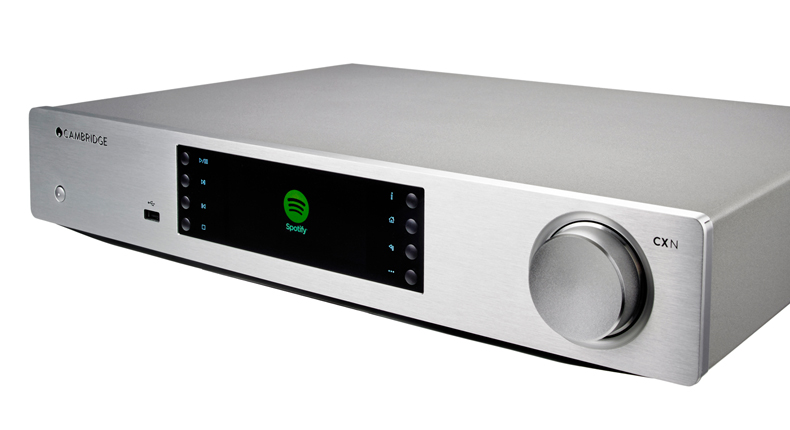
The Poly has a couple of indicator lights of its own, which are more low-key and functional. They denote Mojo pairing, battery life and set-up status. Next to the Cambridge CXN’s full-width chassis and 11cm text display, you initially feel short-changed when holding the Poly in your palm.
Cambridge’s ‘floating design’ brushed aluminium chassis warrants a whole rack shelf, and needs two hands to hold. We like Cambridge's decision to make the front panel display-centric - and we have to give special mention to that volume dial, which has a perfectly weighted resistance that makes the way the menu responds delightful.
Features
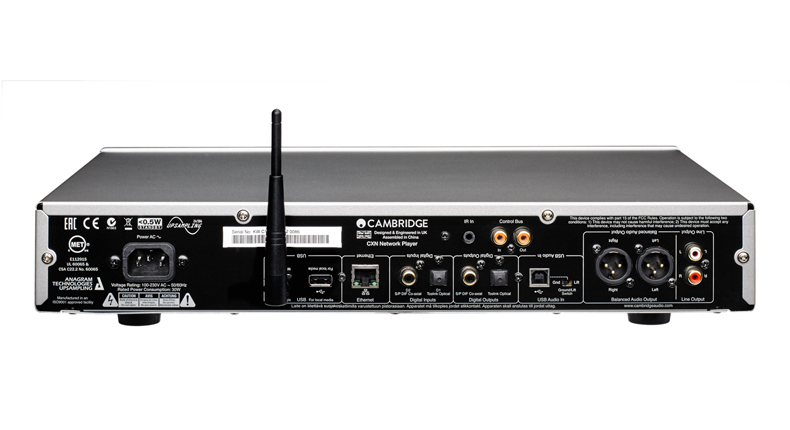
From the menu, you can connect the Cambridge to a wi-fi network (or via an ethernet socket), access internet radio and browse music on your NAS folders (although the latter can also be done via the reliable and intuitive Cambridge Connect app). File support is extensive, with all the popular formats including WAV, FLAC, AIFF, ALAC and MP3 supported.
The latest hi-fi, home cinema and tech news, reviews, buying advice and deals, direct to your inbox.
All digital inputs on the CXN are capable of playing high-resolution files of up to 24bit/192kHz, and they can be upsampled to 384kHz too. That includes the USB type B connection for your laptop or PC, and the optical and coaxial inputs. DSD 64 files can be played back via the back-panel USB input too. There’s also a pair of RCA and balanced XLR outputs, along with two digital outputs.
As far as other streaming features go, Apple users can stream over AirPlay, and built-in Spotify Connect gives users easy access to the streaming service’s rich catalogue.
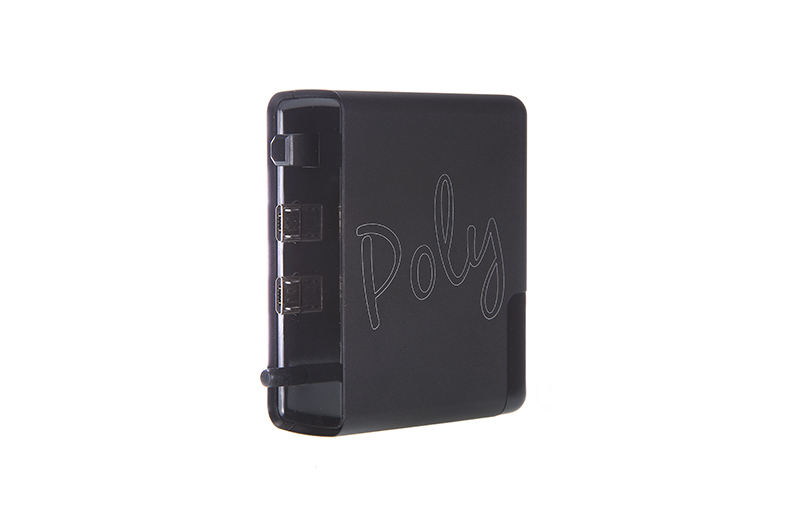
As the Poly physically takes up the Mojo’s digital inputs, you’ll have to unplug any connected sources while you stream. The Poly enables DLNA, Bluetooth and AirPlay streaming, and features a microSD card slot for local playback. Of course, you can stream PCM files (up to a staggering 768kHz) and DSD256 stored on your network. Google Chromecast also features on the Poly’s ‘coming soon’ list.
At the Mojo’s output end, the twin 3.5mm jacks are ideal for most headphones. To connect to a system, though, you’ll need a 3.5mm-to-RCA cable. You’ll also be a slave to the Poly’s claimed nine-hour battery life – the Mojo’s is ten hours.

You’ll have realised by now the Chord pair is the fussier option. It also requires some patience. Setting it up for DLNA use demands more from you than it should. Mirroring the process of assembling flatpack furniture, the journey begins with an old-school foldout paper manual.
You are then prompted to use the supplied pin to hold the Poly’s P-status button down for five seconds, which makes the Poly’s network discoverable. Once you’ve connected your device to the Poly’s network, and to your own via the pop-up screen, the Poly is ready to stream your networked files.
At this point, the Poly comes clean about not having its own app, which is a shame as far as we’re concerned. The app is the basic usability experience of most music streamers, the place from which you can access them and perform playback controls.
If the Chord software was as appetising as its hardware design, it would surely offer an enjoyable experience - but in the absence of an app, you’ll have to download a third-party DLNA server app. Chord’s manual gives Plex and 8 Player as examples, but they both cost extra for full access.
A perfectly usable free app for both Android & iOS devices is MyAudioStream Lite and the Android-friendly BubbleUPnP app. The alternative is playback via Roon software on a PC or Mac, enabling Tidal and MQA file streaming.
MORE: MQA - what is it? How can you get it?
Sound
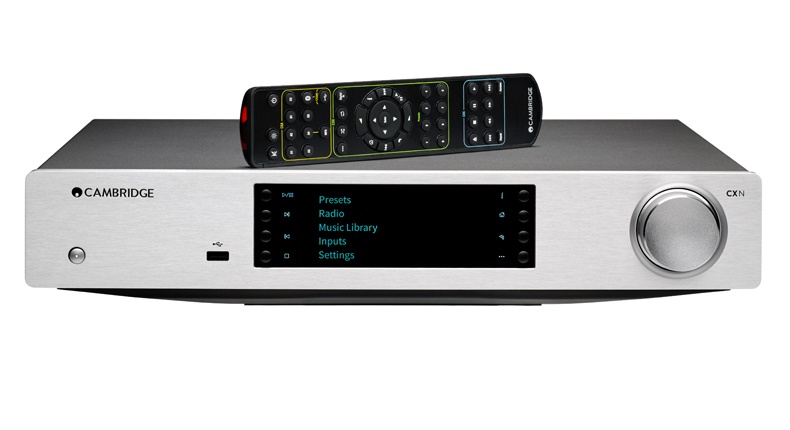
Unless portability is a priority, the Cambridge may appear the go-to option for its greater versatility, ease of use and affordability. It doesn’t let itself down in the sound department, either.
There’s an enthusiastic drive to its performance - it combines subtlety, snappy timing and rich detail to deliver a sound that’s just wonderfully entertaining.
We’ve seldom heard a Cambridge product sound as muscular as the CXN. Basslines are meaty, textured and bound along happily to the lively sense of rhythm. The stop and start of notes are precisely delivered and, while the sound isn’t overly smooth, its full-bodied performance is hugely pleasing to listen to.
The midrange in particular sounds lovely, with vocals fully fleshed out and packed with character. The streamer is not fussy with file type either, sounding fluid and dynamic with hi-res and Spotify-streamed tracks alike.
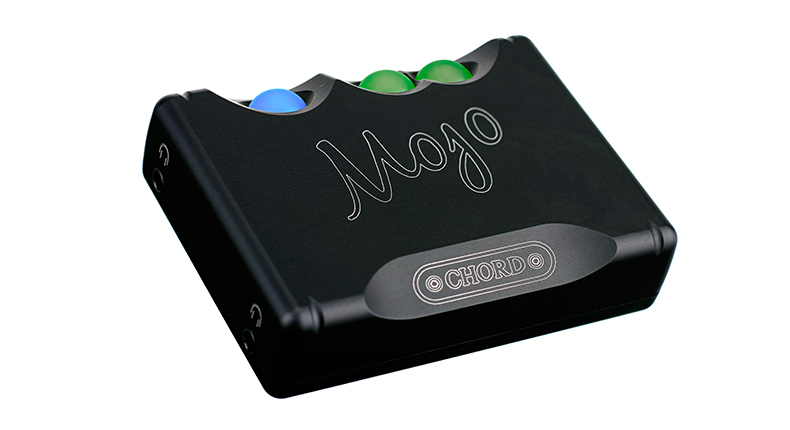
But even so, the Chord manage to tip the scales in its favour just a little. Compared to the Cambridge, the Chord combo is even more articulate and rhythmically adept.
Playing Bon Iver’s 666ʇ they deliver the opening two-chime notes and glitchy guitar attacks with greater clarity and texture, pursuing the harmonics of the distorted instruments with greater resolve. The stepping-stone pattern, which rides underneath as Bon Iver stacks his dense synth-washed canvas layer-by-layer, has a closer-knit correlation with everything else.
And when his warped, auto-tuned chop comes in, it’s placed centre stage with a level of articulacy and dynamic finesse the Cambridge can’t quite match.
The Poly/Mojo pairing may not offer quite the expanse of the bigger-sounding CXN, nor perhaps the space upon its stage, but it hardly lacks scope either. Thelonious Monk’s Locomotive is a mass of jazz, and the Chords capture the arrangement’s density without sounding claustrophobic.
There’s life, and dynamic lift, to the clarinet, and the tight liaison between the piano player and cymbal-tapping drummer is never in question. We plug our B&W P5 headphones into the Mojo and stream from an LG G6 smartphone to test the Chords’ portability. We find they give music a gigantic leap in clarity, solidity and detail over the smartphone’s solo performance.
Verdict
In terms of musical matrimony, the Chord Poly and Mojo could be gearing up for their Silver anniversary. Sonically this match is made in hi-fi heaven, and the best-sounding streaming option we’ve heard for under £1000.
But the Poly/Mojo combo won’t be for everyone. Its lack of a dedicated app is frustrating, as is the lack of a mains-power option or accessibility to physical inputs to increase its practicality within a hi-fi system. The set-up is more laborious than it should be, too.
For those looking for a more system-dedicated option that’s easier to live with, the Cambridge CXN’s higher average across-the-board score with features, usability and performance makes it a decent all-rounder – exactly what today’s music streamers should be.
Cambridge CXN (£700)
FIVE STARS
FOR: Impressive, enjoyable sound quality; sleek design; good build; excellent features and file support
AGAINST: Given the price, nothing at all
VERDICT: A stylish, feature-packed streamer that's great to use and listen to
Chord Mojo/Poly (£400/£500)
FIVE STARS
FOR: Informative, dynamic and subtle sound; good build and finish; portability
AGAINST: Runs warm; no mains-power option; eccentric control
VERDICT: If you can get your head around it, this pairing sounds a treat
What Hi-Fi?, founded in 1976, is the world's leading independent guide to buying and owning hi-fi and home entertainment products. Our comprehensive tests help you buy the very best for your money, with our advice sections giving you step-by-step information on how to get even more from your music and movies. Everything is tested by our dedicated team of in-house reviewers in our custom-built test rooms in London, Reading and Bath. Our coveted five-star rating and Awards are recognised all over the world as the ultimate seal of approval, so you can buy with absolute confidence.

